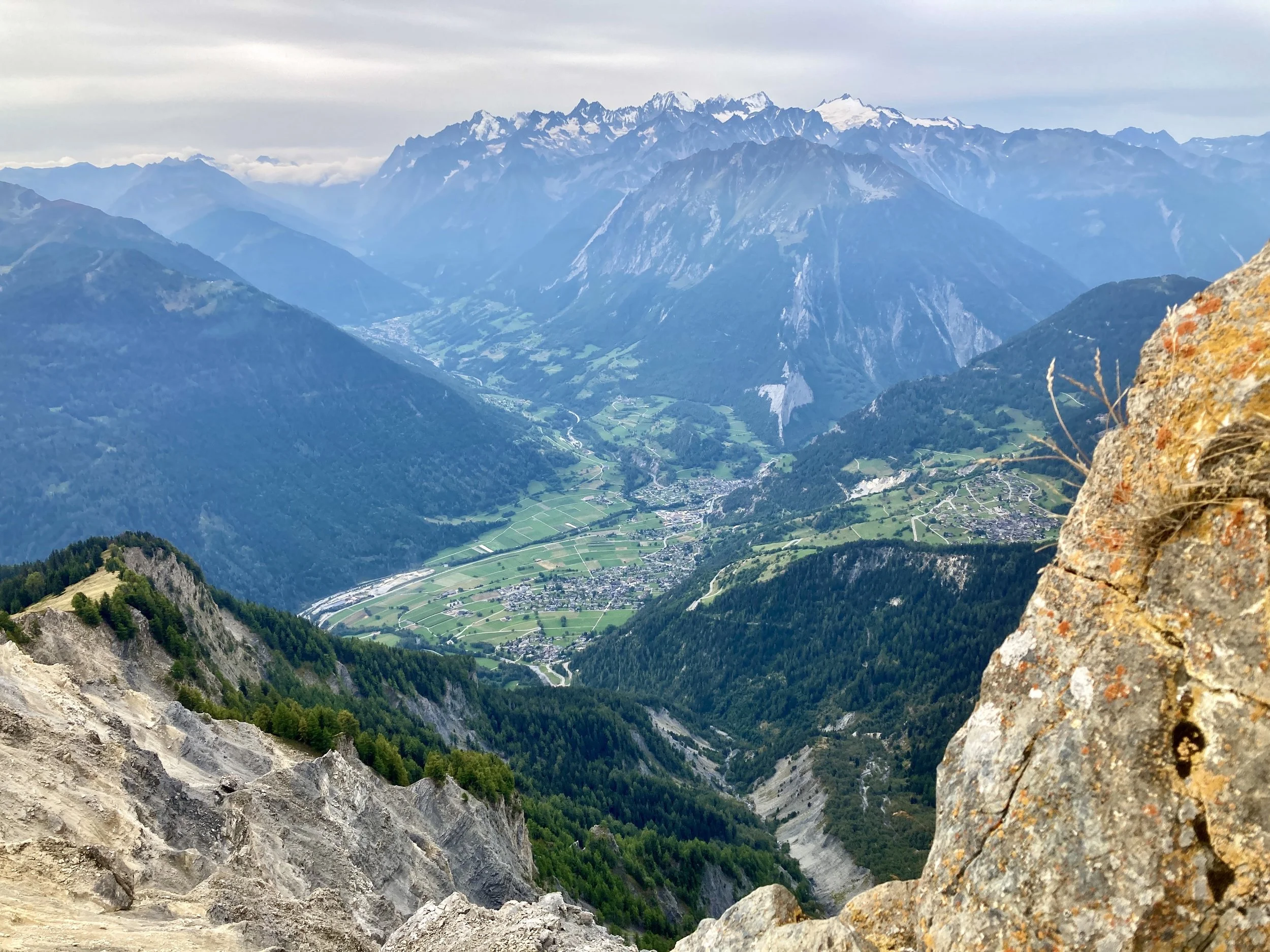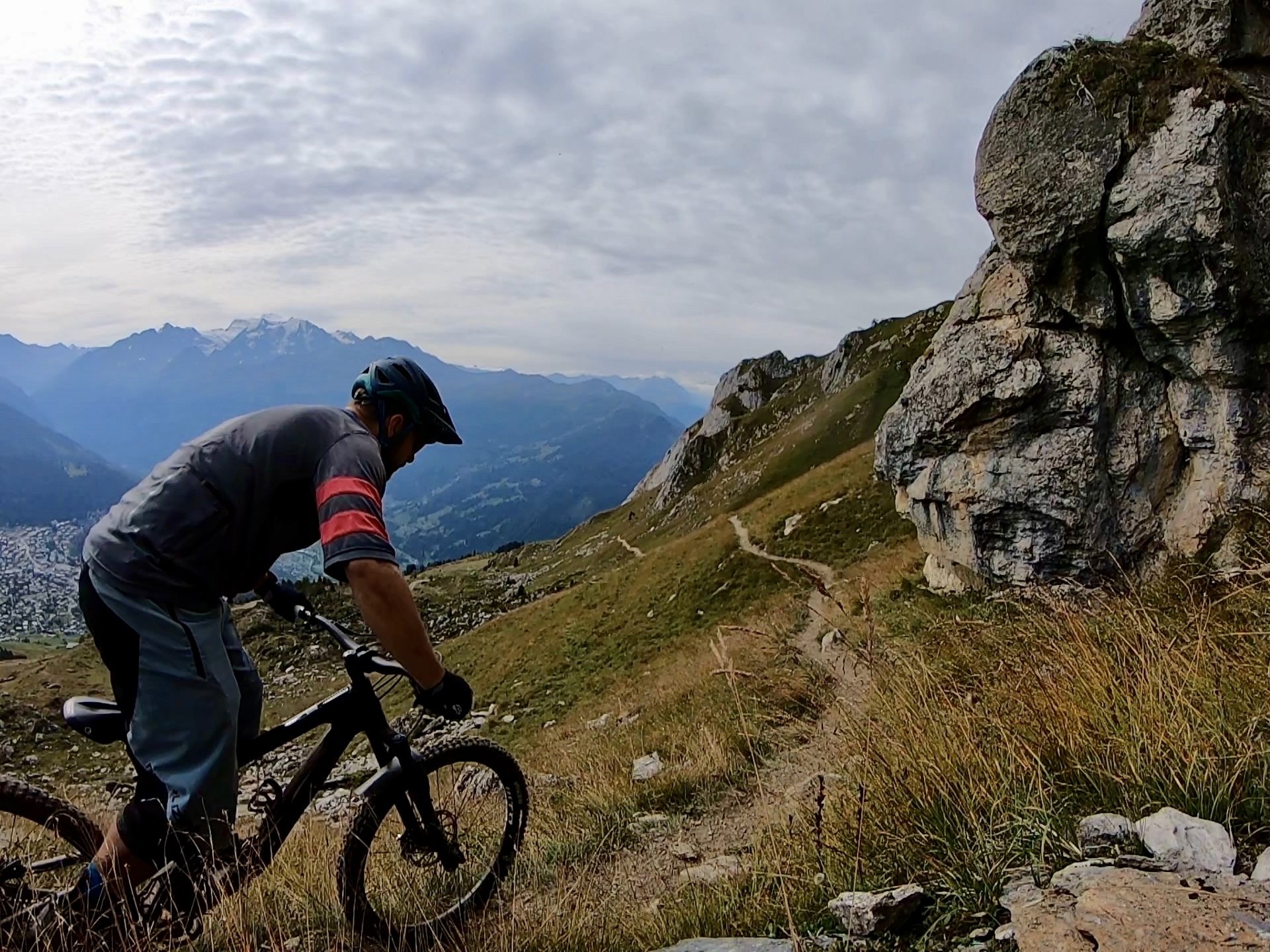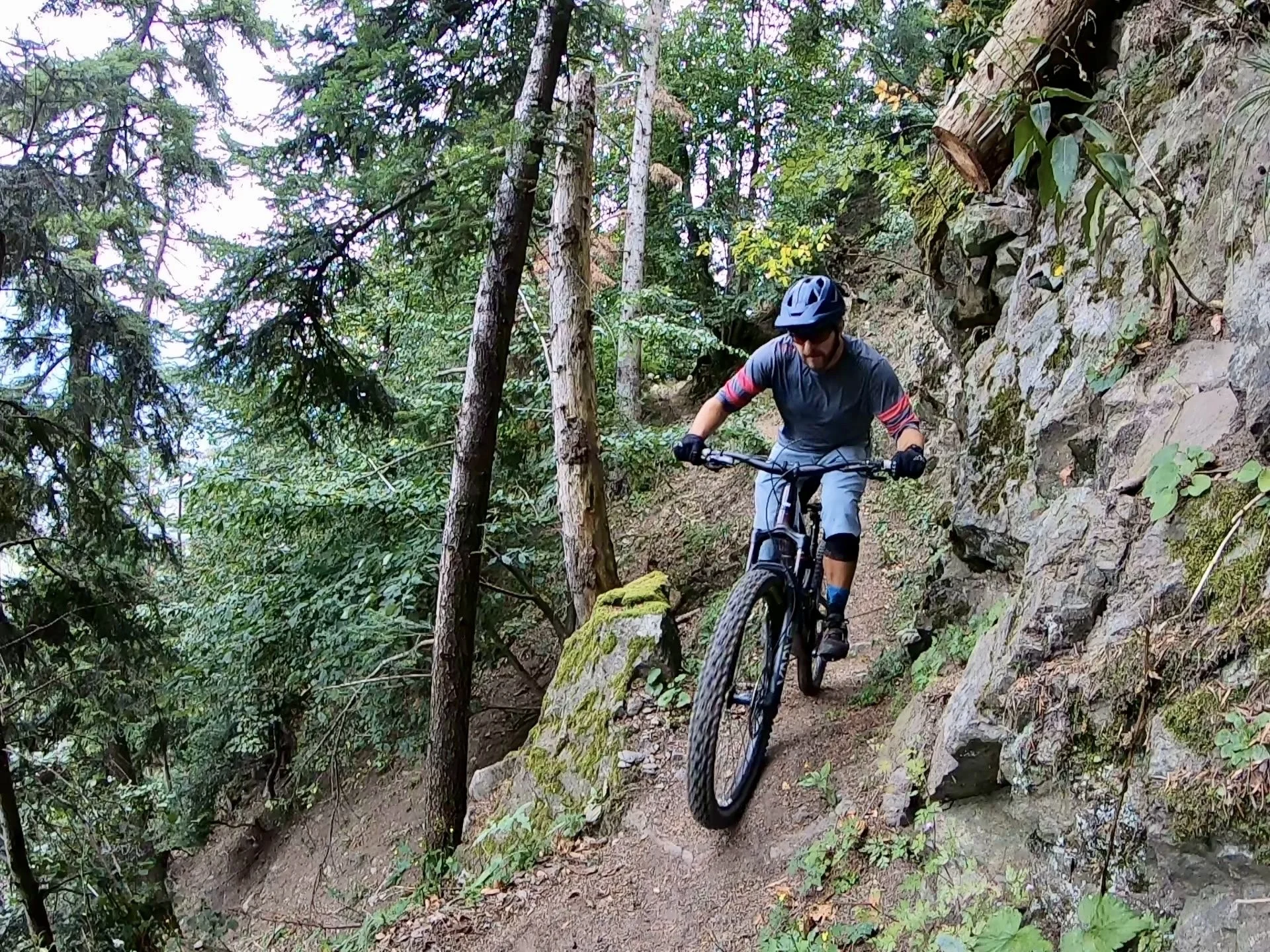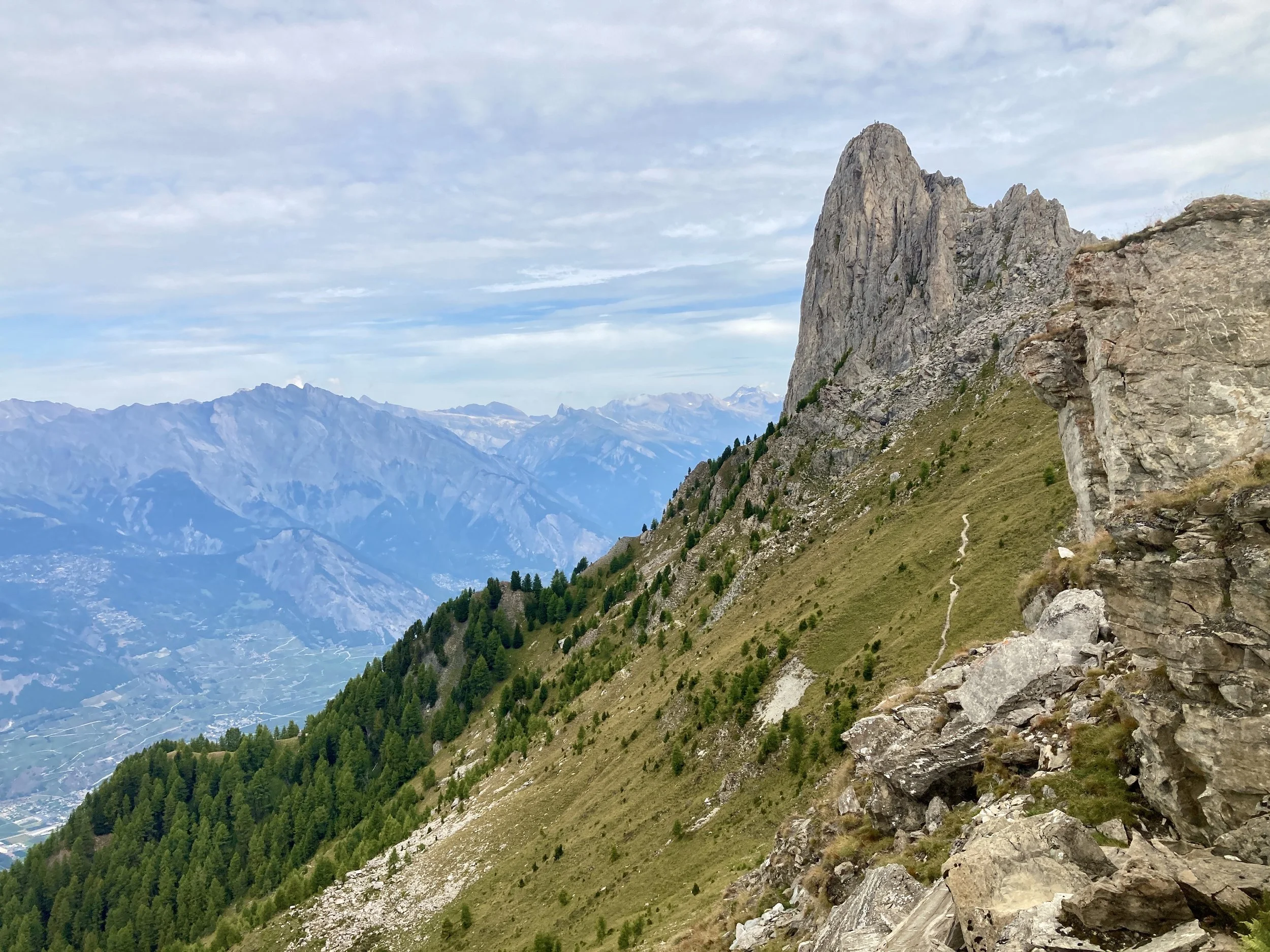The Most Toxic Subliminal Message that Keeps Many People from Going Outdoors
From a solo adventure in Verbier, Switzerland.
An insidious subliminal message permeates many guides that have been written about outdoor safety, hundreds (if not thousands) of articles written in outdoor and adventure media, and even the way that we talk to each other about going on adventures. This toxic and downright fallacious widely-held belief is that going on outdoor adventures by yourself is dangerous, but that if you go with other people, you're safer.
Sometimes this messaging is overt, but many times it's an undercurrent running through our everyday conversations. Now granted, I don't hear it as much or as often from the true backcountry badasses, because they know that they'd almost never get out the door if they always had to wait on a friend to be ready and willing to tackle an epic excursion. But when you start talking to people on the periphery of the outdoor adventure world, this toxic belief comes through in full force.
Many times I've casually told someone about a big ride deep into the mountains that I've been planning, and they might say, "oh, who's going with you?"
"Hmm, nobody?" I'll respond.
"Oh, that sounds dangerous! Be safe out there!" the inevitable response goes.
Why is my going out into the mountains more dangerous when I'm traveling solo? Why do other people perceive it to be less dangerous when I'm with another person? This is a widely-held belief that may be difficult to untangle in just one article, but I'll try to take a stab at it.
The Differences Between 3 Types of Backcountry Sports
First, let's acknowledge that some sports do require partners, at least most of the time. The most obvious example is rock climbing, where you (almost) always have a partner belaying you, and you take turns protecting the other person as they climb up the sheer rock face.
Then, there's a second group of sports where the line is a bit murkier as you aren't physically tied to another human being, but it's generally agreed that you will be safer if you travel with other people. Examples include backcountry skiing in avalanche terrain and whitewater sports of all types.
Finally, there's a third group of sports where this subliminal messaging still gets communicated constantly, yet to me, it seems entirely non-obvious that there's any appreciable safety in numbers. Examples here include hiking, mountain biking, non-technical peak climbing, trail running, backpacking, flatwater paddling, and many more.
Technical mountaineering can fall in either category 1, 2, or 3, depending on how you approach the climb.
At this point, I've sampled the vast majority of outdoor adventure sports, and I've had love affairs with many—like rock climbing—that have only lasted a period of time. But these days, I spend most of my time participating in the third category of sports.
My Own Solo Adventures
Verbier, Switzerland
I love adventuring with other people, but as anyone who goes outside every single day will tell you: you can't always recruit a friend to join you on every adventure. Personally, I average about 50/50—50 percent of the time spent adventuring with other people and 50 percent solo.
But among the many people I know who do spend a serious amount of time adventuring solo, I find many of them still stick to familiar or mellow terrain when they are out in the mountains on their own. Instead of heading deep into the wilderness to explore a new trail, they'll stick to the town trails until they can find a companion.
This still poses a big problem. If I had to wait for a friend to be able to take time off of work and fly to British Columbia, or Switzerland, or the wildest corners of Idaho, I'd never get to see the world the way I do or challenge myself on the big epics.
So, the simple answer is: I don't wait.
I've mountain biked and scrambled up (and down) 14,000-foot mountain peaks in Colorado on my own. I've paddleboarded solo across Norwegian fjords. I've summited and skied new-to-me peaks in the Montana wilderness without seeing another human being. I've crossed remote mountain ranges on my mountain bike in Idaho in the heart of grizzly country on my own. I've rappelled off of unknown cliff faces in Montana on my own. I've scrambled up rocky cliffs and mesas in the Utah desert. I've climbed exposed mountain ridges in the Alps and plotted my own epic MTB descents, all on my own. I've explored almost nonexistent, unmarked trails on my own all around the world.
And so far, I've still managed to come back alive.
This leads me to the core argument of this article:
You're not necessarily safer when you adventure with a group.
Safety in the outdoors is a personal matter. You—and ONLY you— are responsible for your safety. You are the ultimate decision-maker who gets to determine whether or not a risk is acceptable or whether you're going to turn back or take a safer alternative. It's not up to anyone else—it's only up to you.
Mountain Biking Examples
Verbier, Switzerland
Even in mountain biking, the third category of sports that I listed above, the messaging about traveling with others to promote safety is not only subliminal, it's often overt. In a recent Instagram post from IMBA, they mentioned "Ride With Someone" as one of their top tips for getting prepared for a mountain bike ride. But riding with other people does nothing to increase your safety on the mountain bike.
Let's take the extreme example of death from a mountain bike crash. While it's rare, it does happen. If you crash your mountain bike at high speeds, blunt force trauma to the chest can kill you. You can land on your head or back, snap your spine, and die. I've reported on several such crashes over the years.
Whether or not you're riding with a group of people doesn't make a damn bit of difference to whether or not you'll die from a broken spine in a crash, unless your friends can somehow manage to call 911 and get you evacuated from the trail in short order. Having called 911 from the trail before for a racer with a broken femur, and having spent hours sitting with this racer as we waited for the search and rescue team to try to figure out how to access this remote trail in the North Georgia mountains, let me tell you: if you have to depend on a quick evacuation in order to survive, you are fucked. You are dead.
You cannot rely on search and rescue to save your life. You cannot plan on search and rescue as a backup plan. I've read too many SAR reports of rescue attempts that instead turned into body retrievals to depend on SAR as a safety net.
And the exact same thing applies to having other people in your group.
Whether or not you have a bad crash is entirely dependent upon your skill level and how accurately you assess the level of risk. Personally, I often choose to bypass serious obstacles, and sometimes, I even walk my bike. Why? Because I want to live to ride another day.
I will never understand the people that say, "oh, I'll give this drop a try because I'm riding with a group today." If you wouldn't send it solo, why would you send it with a group? You'll end up just as dead if you fuck it up.
The Dangers of Groupthink
Even in the second category of sports mentioned above—such as backcountry skiing in avalanche terrain—you are still solely responsible for your decisions and the amount of risk you take. However, you can actually incur more risk by traveling as a part of a large group. This danger arises from groupthink.
"Groupthink is a psychological phenomenon that occurs within a group of people in which the desire for harmony or conformity in the group results in an irrational or dysfunctional decision-making outcome," according to Wikipedia. "Cohesiveness, or the desire for cohesiveness, in a group may produce a tendency among the members to agree at all costs. This causes the group to minimize conflict and reach a consensus decision without critical evaluation."
In backcountry travel, groupthink can give rise to group polarization, which "holds that groups leaning toward risk—like taking a ski tour through avalanche terrain—could make a riskier decision than any of the group's individuals," according to Jason Blevins in an article in The Denver Post.
There are many interrelated factors connected to groupthink and group polarization that can cause dramatic problems, but all of these problems boil down to you relinquishing the responsibility for your decision making to someone else. This someone could be the group as a whole, and if the group reaches group polarization, you could be in for a world of hurt.
One particular type of faulty decision making is known as the "halo effect," whereby you (and possibly others in the group) defer to the decisions made by someone who appears to be an "expert."
In this example, let's say you're standing on top of a backcountry ski line and are preparing to drop in. The "expert" in your group may say that the snowpack looks safe, but perhaps you're feeling a bit hesitant based on your own reading of the terrain and the daily avalanche bulletin. If you're feeling hesitant, but the "expert" proclaims that the terrain is safe, you're much more likely to defer your decision making to that of the expert.
In our example, the group drops into the line, and 5 out of 6 people die. And sorry to say, but you weren't the one who survived. (Several similar highly-publicized tragedies have occurred in recent years—read this article from the Denver Post for more.)
Now, let's rewind this hypothetical scenario, and instead, you arrive at the top of the line, and you are skiing completely on your own. You balance your reading of the daily avalanche bulletin against the factors that you're observing in the real world, and deep in your gut, you're feeling serious misgivings. Based on your observations, you decide to turn back and ski down the safer, more mellow terrain back to your car.
Based on your own individualized decision making, you lived to ski another day.
Is skiing solo the safest course of action? No... but it could be safer than skiing in a large group. According to a study by Ian McCammon titled "Heuristic Traps in Recreational Avalanche Accidents: Evidence and Implications," "people traveling alone and in parties of six to 10 exposed themselves to significantly more hazard than groups of two, three, or four," writes Jason Blevins.
While going backcountry skiing with one or two trusted friends could save your life if you get caught in an avalanche, the best alternative is to keep something from going wrong in the first place by making smart decisions.
Nature Can and Will Fucking Kill You
Verbier, Switzerland
Yes, you can die in the mountains. That day hike you're planning to summit a 14er? It could be your last. Hikers die on 14ers in Colorado all the fucking time.
A recent study has shown that day hikers are the most at-risk population in the mountains. While it's unclear whether the sheer number of day hikers may be skewing the stats slightly, the general consensus is that the day hikers' lack of preparedness and general cavalierness when they head up the trail is a major contributing factor.
It's ultra-important to note that I'm not saying in this article that going into nature isn't dangerous. No, there are a thousand and one ways to die in the mountains, forests, deserts, rivers, and oceans.
Mother Nature"? More like "Nature: The Grim Reaper."
But here's the thing: when you head out into the mountains every day and realize, "Hey, I know it's a beautiful sunny day, and I'm going for a walk up this little trail, but something crazy could happen, and I could die out here," you better grasp how fragile life is. When you understand the fragility of your existence, you adjust your decision making and risk assessment accordingly. Living with this reality, that every day could be your last, makes you much less cavalier when you leave the trailhead.
It means that you'll be prepared: you'll take more food and water and clothing than you'll most likely need, but if something bad does happen, you'll have a little buffer that might get you out alive. Maybe you'll travel with a fire starter and a space blanket at all times. Or maybe you'll choose to turn around a few hundred feet before the summit when you hear the clouds begin to rumble. Oftentimes, these small decisions are the ones that will bring you back from the mountains alive. When you live with the constant reality that each day could be your last, ironically, it most likely won't be.
Don't Stop Going Outdoors
Yes, nature can and will fucking kill you if it gets the chance. But whether you're traveling solo or are surrounded by others has little to do with it in most situations. Rather, the main factors that make adventuring in the backcountry dangerous are a lack of skill, a lack of preparedness, and poor risk management. You can overcome all three of these factors through practice, preparation, education, and critical thinking.
You can't outsource any of these three deficits to other people. You can't relegate your decision making to others. You and only you can take control of the situation and make the right calls that will bring you back alive.
When you realize that you are in control of your destiny, it instantly frees you from the shackles of needing to find an adventure partner every time you want to go out the door and explore.
Get out there. Have an epic adventure by yourself! Just make sure you come back alive.




